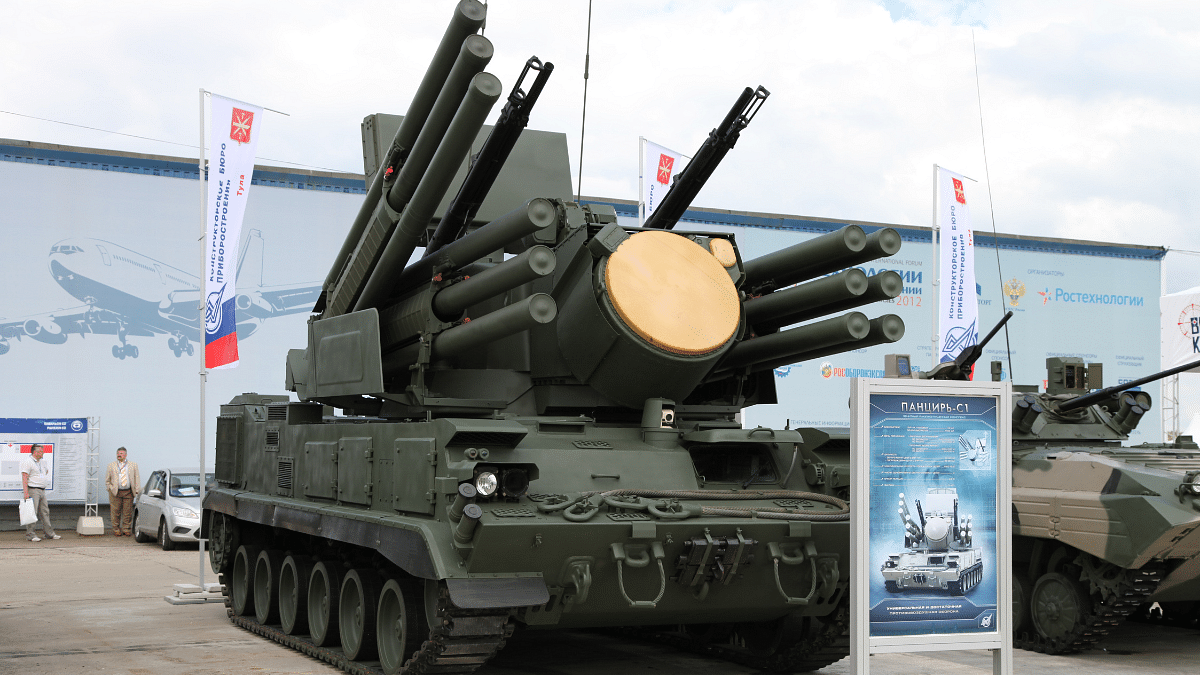In a significant move reflecting the enduring defense partnership between India and Russia, discussions are underway regarding the potential acquisition of the latest generation Pantsir mobile air defense system by India. This development follows a memorandum of understanding (MoU) signed last week between Bharat Dynamics Limited (BDL) and Russia’s state-owned Rosoboronexport, aimed at fostering cooperation on various Pantsir variants.
The Indian Army is actively searching for Carrier Air Defence Tracked (CADET) systems that meet the requirement of at least 50 percent indigenous content. The CADET systems are slated to support mechanized columns, a strategic initiative that comes as multiple air defense projects are under review.
According to defense sources, the version of the Pantsir being offered by Russia is the latest, but specifics remain unclear, as there are multiple variants available. The latest iteration is specifically designed to operate effectively in extremely cold temperatures. Notably, Russia has demonstrated the Pantsir-S1 mounted on a tracked GM-352 chassis. This chassis, produced by Mytishchi Machine-Building Plant, is versatile enough to accommodate various systems, including infantry combat vehicles and the Pantsir itself.
Upon selection, the CADET chassis is expected to serve as a foundational platform for other air defense projects the Indian Army is considering. Future purchases of the CADET systems will likely see upgraded capabilities incorporated.
The CADET platform is designed as a box-shaped, tracked chassis with a raised structure, creating ample internal space for a crew of four and necessary equipment. Additionally, it will feature external attachment points for various systems related to both current and future air defense technologies.
This is not the first time the Pantsir has been in consideration for an Indian Army project. Back in 2013, it was among the contenders for a similar air defense initiative. During that competition, the Indian Army shortlisted offerings from South Korea’s Hanwha Defense Systems, which proposed its Hybrid Biho system, as well as Russian firms Almaz Antey and KBP Tula, which each pitched upgraded variants of their systems. Ultimately, the South Korean bid was selected, but the deal fell through, largely due to disputes over indigenous content requirements.
Army officials have indicated that the Biho system remains significant, with a tracked version available. The CADET systems are intended for deployment across varied terrains—plains, deserts, semi-deserts, and mountainous regions up to 5,000 meters.
Additionally, this development arrives as China has unveiled its latest SWS2 35mm self-propelled anti-aircraft gun, which incorporates both artillery and missile capabilities aimed at countering diverse aerial threats, particularly drones and low-flying aircraft.
The Pantsir system, initially developed in the late 1980s as a successor to the 2K22 Tunguska, saw multiple iterations before its finalized version was adopted for service in 2003. Its operational use has stretched across numerous countries, notably in conflict zones such as Syria and during the ongoing hostilities in Ukraine. Reports indicate the Pantsir systems are strategically positioned on rooftops of significant buildings within Russia, including the residence of President Vladimir Putin.
In an interesting twist, a Pantsir-S1 system was reported to have been smuggled out of Libya by U.S. forces in June 2020 after it was seized from Russian-aligned forces. Subsequently, it was transported to Ramstein Air Base in Germany for analysis.
Upgraded versions of the Pantsir are currently under development, including the Pantsir-SM, which boasts a detection range of up to 75 kilometers and an engagement range of 40 kilometers. This model was first tested in 2019 and has since been reported to enter service. The Pantsir-S1M export variant features a new missile and an engagement range of 30 kilometers, showcasing the system’s evolving capabilities. The Pantsir-S1 is equipped with twelve surface-to-air guided missiles along with dual 30mm automatic guns, emphasizing its robust defensive arsenal.













